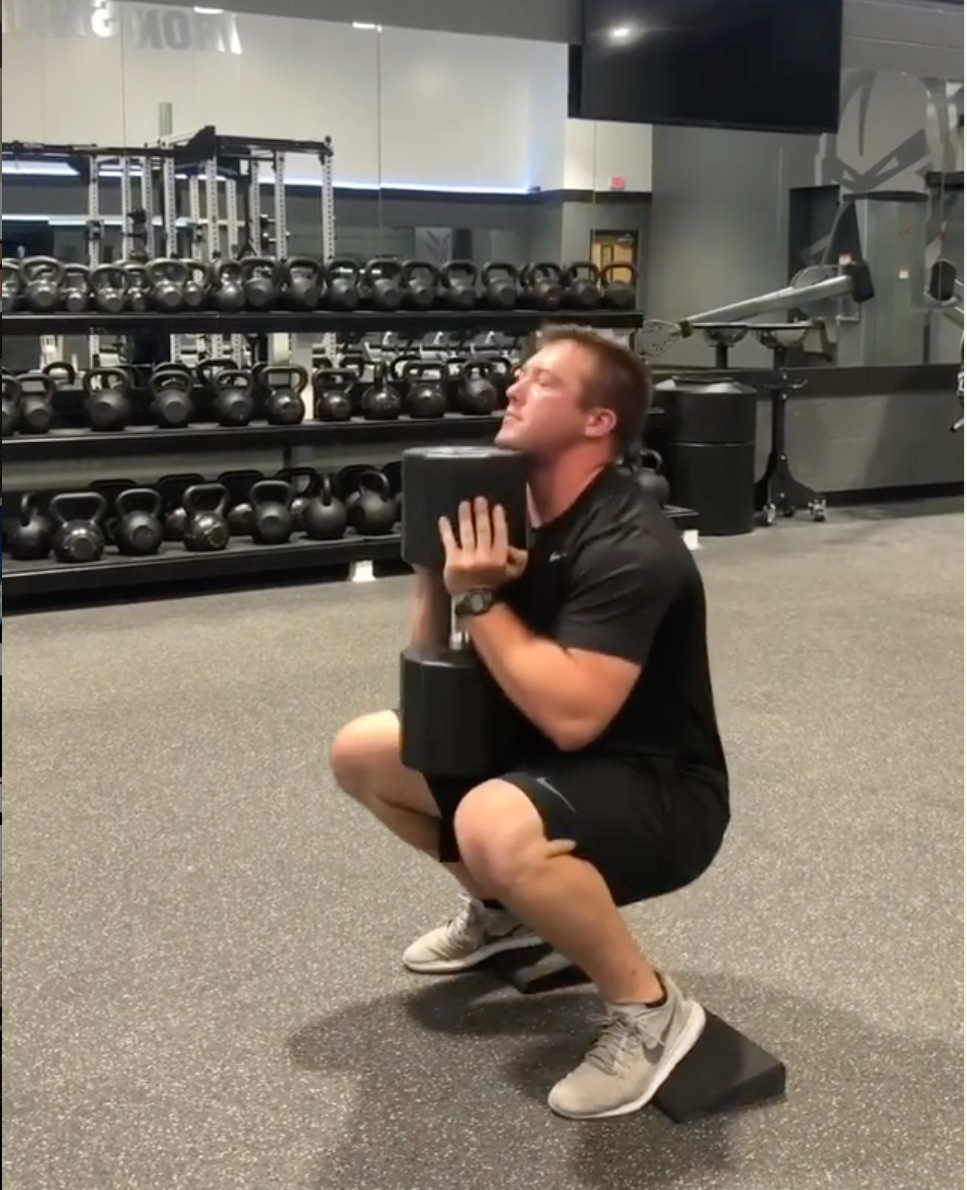Something that’s important to keep in perspective as a trainer, a group exercise instructor, a strength coach, or someone who works out on their own is what’s the purpose behind the exercises you chose? As one ventures further and further along in their fitness journey, their tool belt of exercises to choose from will grow immensely. If you were to ask any quality trainer for a variation of a squat they should be able to rattle off a number of them right away.
Let’s say you’ve been training for a few years now and have really gotten to know your way around the gym, and today you’re planning to squat. Do you want to high bar or low bar back squat? Front squat? Overhead squat? Do you wear a belt and lifting shoes, or are you going to rock some vans and go beltless? You’ve squatted using different tempos, stance widths, in a staggered stance, and even with one foot one a bench. You’ve also used plenty of different equipment before. You’ve done goblet squats with kettlebells and dumbbells. You’ve done jump squats and overhead squats with a TRX. You’ve even messed around with squatting while standing on a bosuball. So which do you choose?
Well, it’s all about what you want to get out of the exercise and what each variation can offer you. A low bar back squat is going to have the highest potential for maximizing the weight lifted due to it’s bilateral stance, it’s slightly varied muscle recruitment, and it’s biomechanical advantages. A split squat or a rear foot elevated split squat may allow for a higher relative load per leg and will develop strength and power through a single leg (crucial for any athlete). Jump squats work on increasing the rate of force development in the lower body. Goblet squats allow a beginner to strengthen their spinal erectors and progress to squatting with weight.
Those are not the only purposes behind those exercises either, but the point being, each exercise has its given benefits. Too many times people try to make an exercise something it’s not. For example, why do a plank? Develop isometric core strength. So why add hip rotations to it? Then the movement is no longer an isometric contraction. Why bench press? To train the muscles in the upper body involved in pressing. What happens when people lift their feet in the air while benching? It’s for the sake of adding additional core training, but it also decreases one’s points of contact, which decreases one’s stability, and thus decreases the amount of weight one is capable of lifting. A decrease in weight lifted will minimize the desired adaptations.
The next time you go to the gym, ask yourself why you’re doing the exercises you’re doing and what their purposes are. This post barely scratches the surface of this topic.
If you want any advice about what exercises to do based on your desired outcome, or have any questions about the purpose of exercises, please comment below or email us through out contact page.

Comments